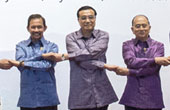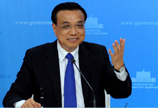
Tourism key to 'lasting' awareness of initiative in public mind
Comments Print Mail Large Medium Small
Highlighting the modern Silk Road's cultural importance will help pave the way for people to better understand the initiative and its direction, specialists said at the Silk Road International Cultural Forum held in the Kazakh capital Astana last week.
The forum attracted more than 100 delegates, specialists, scholars and decision-makers, as well as representatives from various enterprises from China, Kazakhstan, Russia, Kyrgyzstan and Tajikistan.
According to the Astana Consensus reached at the two-day forum, cooperation will be a major focus of the countries and organizations involved in the Silk Road, but getting the public to appreciate just how beneficial it will be is also a prime goal.
"Everybody is talking about the Silk Road, but not many people know that much about it," said Wang Dong, a philosophy professor from Peking University, suggesting tourism would be a good way to fire the public's imagination.
The Silk Road is a route that has been recognized as having extreme cultural and historical importance, and the "Chang'an-Tianshan corridor of the Silk Road", which includes 33 cultural heritage sites in China, Kazakhstan and Kyrgyzstan, was proclaimed a UNSESCO World Heritage site in June.
In 2013, in a speech in Astana, President Xi Jinping proposed establishing a Silk Road Economic Belt.
"If we want to make economic expectations a reality and let people feel the splendor of history, it's better to encourage them to see and understand what the Silk Road really is," Wang said.
In Russia, for example, museum managers have been designing travel routes along the Silk Road's cultural heritage sites to raise public awareness.
"Ethnology is significant in developing tourism and products," said Elena Gerasimenko, deputy director of St. Petersburg-based Russian Museum of Ethnography. "Museums along the route could give people a new awareness to understand their heritage, and connect them with societies in other countries or regions."
However, she said, plans to combine international efforts to promote cross-border travel along the route are still at the blueprint stage. Compared with nearly 100 million Chinese visitors going overseas every year, the number of people traveling along the Silk Road is too small to calculate, she said.
"Visa issues are still a major problem," said Kang Hao, secretary-general of the China Television Production Committee, who leads teams to coproduce programs in Central Asia. Obtaining visas is not without its difficulties even though travel demand has been growing because of the productions.
But at least plans to make travel easier are being considered.
Enterprises and businesses are lending a hand.
"It is unrealistic to find a specific solution within a short time, but what we want is a lasting mechanism encouraging greater communication," Jin Yongsheng, executive vice-president of ENN Group, a Hebei-based energy provider with businesses in Central Asia. He is also the chairman of the China Silk Road Foundation.
"Trade made up only a small portion of the Silk Road's activities in ancient times," Geng Sheng, a researcher at the Institute of History of the Chinese Academy of Social Sciences. He is confident social forces will continue to play an important role today.
wangkaihao@chinadaily.com.cn
Background




